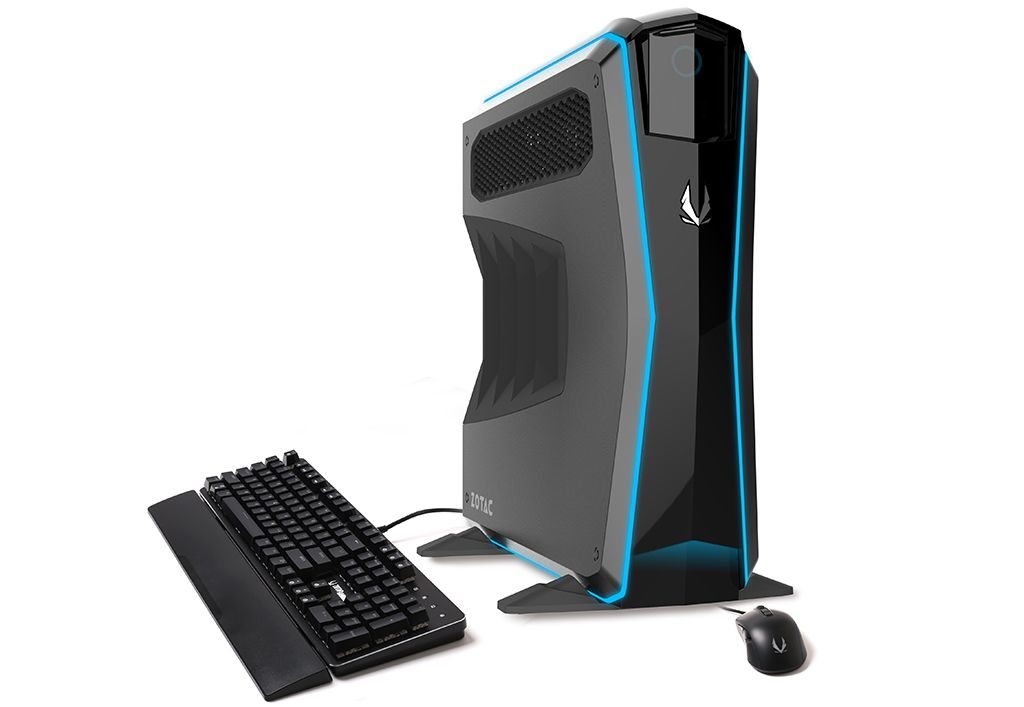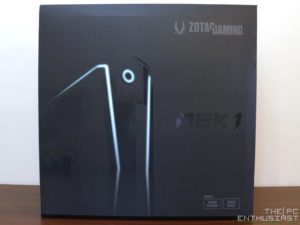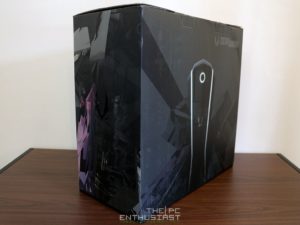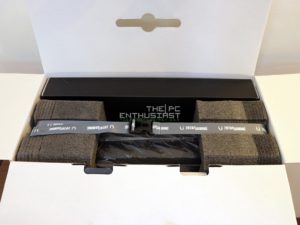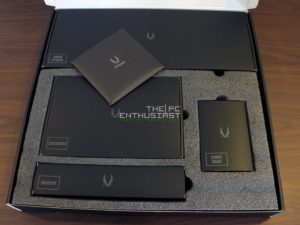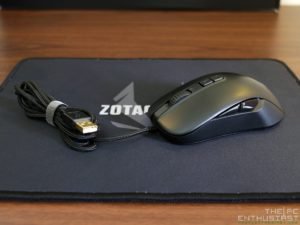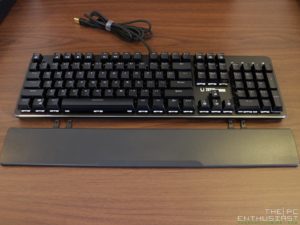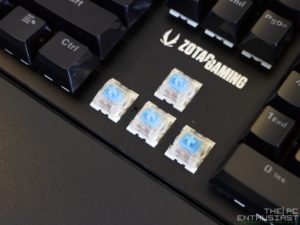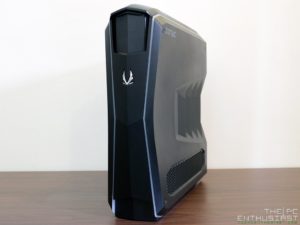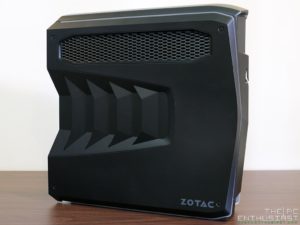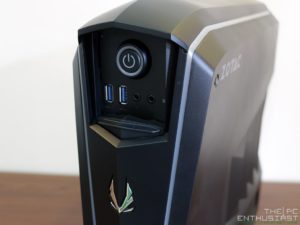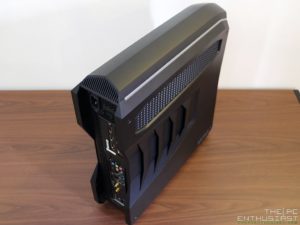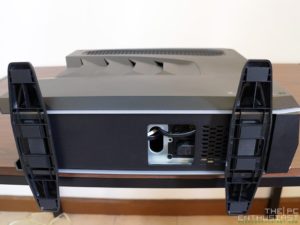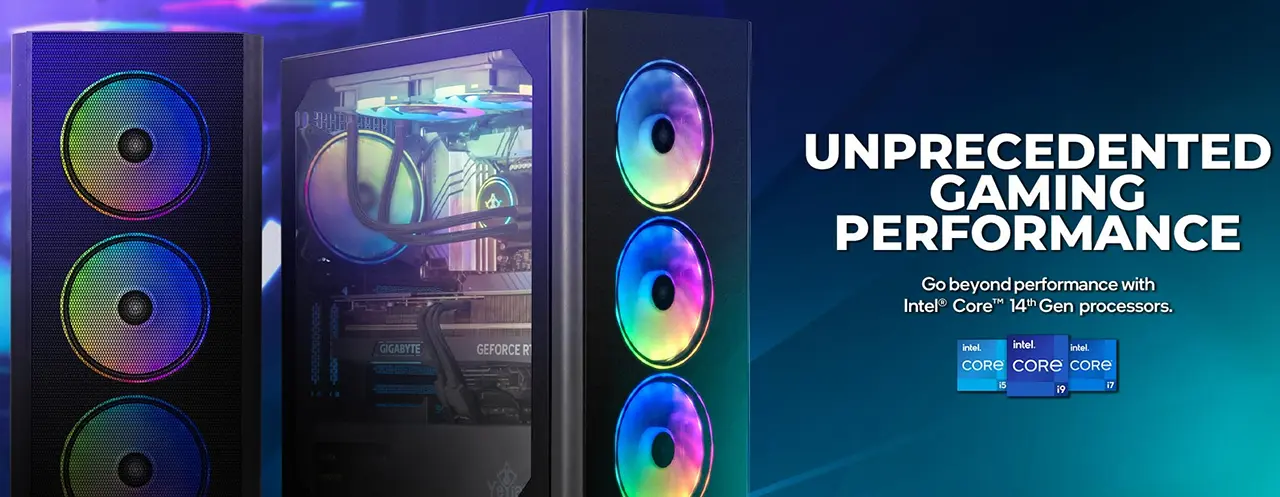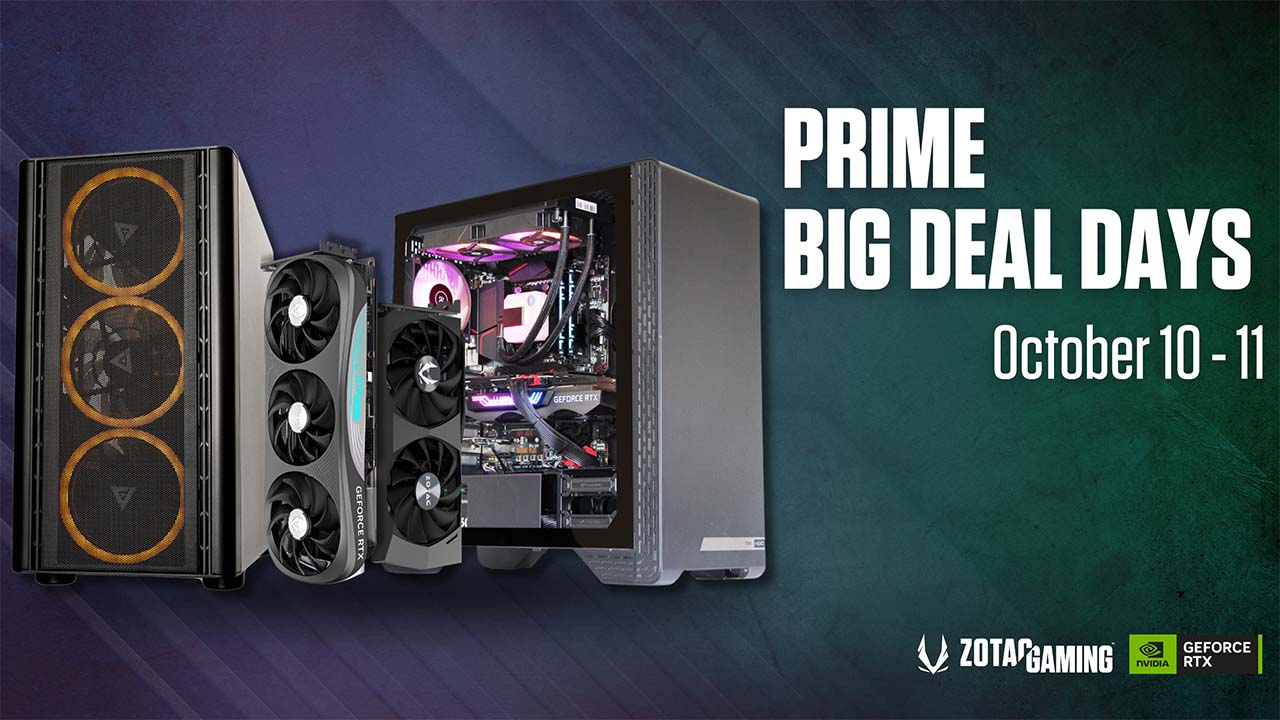It’s been a while since I last used a pre-built system, like really quite a long time now. Most of the systems and gaming PC I used these past several years are all custom built, parts by parts. Some gaming desktop PC (like Alienware) didn’t really caught my attention; since I know, beneath that fancy looking chassis, are just some pretty generic-looking components that you can’t even show off. But Zotac’s MEK1 Gaming PC got me really intrigue for some reason. Its design looks good; sleek-looking, slim and compact body, an all-black color with RGB lighting and a modern and slightly aggressive design. On paper, it looks very nice and this would be an ideal solution for those who want a decent to great performing desktop PC, but do not have the time or (proper) knowledge to build one. I have been reviewing Zotac’s graphics cards these past years, and I know how well and great performing their graphics cards are. But this is the first for me to review one of their system, so it took me quite a while to finish this review. If you’re in the market for a gaming PC, please continue reading my Zotac MEK1 Gaming PC review below and find out what I think about this system after using it for around three months.
Zotac MEK1 Desktop Gaming PC Review – Features and Specifications
Zotac, aside from their graphics cards, is also known for their (ZBox) mini-PC system. The MEK1 is the company’s first full desktop gaming PC featuring a slim and compact body. I would not consider this as a mid-tower desktop system nor a mini-PC. The MEK1 is more like a larger version of a gaming console, like XBox One X or PS4 Pro. The MEK1 is powered by a 7th Gen Intel Core i7-7700 processor (up to 4.2GHz clock speed) paired with 16GB of DDR4-2400 CL17 memory; a Zotac GeForce GTX 1070 Ti 8GB GDDR5 graphics card (blower type) that could play games up to 1440p resolution smoothly. The GTX 1070 Ti is a great graphics card released by NVIDIA late last year to combat AMD’s RX Vega 56; and can even perform on par with a GTX 1080 with some few adjustments on its clock speeds. This gaming PC is also VR Ready and can even play games at 4K UHD. Depending on the game title, how graphics intensive the game is, you may need to adjust the graphics quality in order to hit playable frame rates at 4K resolution.
The company has incorporated its SPECTRA lighting on the casing of the MEK1, giving it a vibrant highlight. The lighting effect can be customized depending on the user’s preference or taste. The chassis or casing is all-black so you don’t need to worry that the lighting would not blend at all. There’s also a white MEK1, but personally I prefer the black one.
The MEK1 has two storage drives: a 240GB M.2 NVMe PCIe SSD for the operating system and a 1TB 2.5″ 5400 RPM Seagate Barracuda hard drive. The OS drive is really fast, it’s not just a SATA SSD; it is an NVMe SSD. But the 1TB Seagate drive is only 5400 RPM though, not the fastest around. Speaking of OS, the MEK1 is pre-installed with Microsoft Windows 10 Home (64-bit).
In terms of connectivity options, you get the following: PS/2, onboard (Realtek ALC 892) 7.1 channel audio with optical output, 6x USB 3.0 ports, 2x USB 2.0 ports, dual Realtek Gigabit Ethernet ports, WiFi (AC 3165) 802.11 a/c/b/g/n with dual WiFi SMA connector, and Bluetooth 4.2.
The MEK1 is powered by a Silverstone SFX 450W 80 Plus Bronze power supply and there are several cooling fans and heatsink inside that cools the system. The motherboard used is a custom Zotac mini-ITX motherboard with Intel B250 Union Point Chipset, but with no display output; display is handled by the GTX 1070 Ti. Despite having a mini-ITX motherboard, it’s not really a mini form factor build like I said earlier. It measures 418.32mm x 118mm x 415.15mm. Let’s take a closer look at the MEK1 below.
Zotac MEK1 Packaging and Closer Look
The Zotac MEK1’s packaging is quite nice, I was not expecting that the actual box and art would look very nice. The box is somewhat big (not too big), but it is sturdy. Opening the box from the top reveals that the MEK1 is surrounded by a thick foam on both sides. A Zotac branded strap holds the foam, keeping the MEK1 enclosed. There’s another box right beside the MEK1 that houses the accessories.
The smaller box contains the accessories included in the box and some reading materials. Each accessory has its own compartment or smaller box. It’s good to see Zotac properly packaged this whole system, everything seems to be well-organized. Even the accessories’ box have some foam inside for added padding or protection.
Inside this other box, you get a power cord, two WiFi antenna, two stands for the MEK1, there’s also an OS recovery disk, a small USB flash drive containing the drivers, a warranty card, a user manual, a quick start guide, and the mouse with mouse pad and mechanical keyboard.
The optical mouse, mouse pad and mechanical keyboard included in the package are also Zotac branded. There’s nothing spectacular about the included optical mouse, but it is functional and ready to use. There’s no software or driver for this, it’s just purely plug and play. But it does have two side buttons for forward and backward, and you can select from 6 DPI settings by pressing the buttons below the scroll wheel. The color beneath the scroll wheel changes every time you switch DPI, so you’ll know when you’re at a different DPI level. The mouse pad is pretty decent and offers enough thickness and surface area. The edge are stitched and the bottom portion is rubberized.
The included mechanical keyboard comes with a wrist rest; and yes it’s a real mechanical keyboard with mechanical switches. But these are not Cherry MX switches, instead Zotac is using Blue switches from Jixian. The keyboard itself is pretty decent and functional as well. It has blue LED backlights, nice key spacing, and the essential keys are there just like on a standard keyboard. It’s also plug and play so there’s no software for the lighting effect or for Macros. Also I noticed that the switches feel and sound a bit different compared to Cherry MX Blue switches.
Obviously, these (the mouse and keyboard) are not on par with mid to high end gaming peripherals. Nevertheless, they are functional and you can use them until such time you’ll be able to upgrade to a better gaming mouse and keyboard.
Here’s the MEK1 right out of the box, you can see the foam on both sides and a strap is keeping them together. The unit is also protected by a plastic cover.
Above you see the front and side views of the MEK1, I haven’t installed its feet yet. It looks nice, and I like the stylish and somewhat aggressive design. Notice that on one side the grilles are on the top portion, while on the other side the grilles are on the bottom portion. The top grilles is where the GPU is, while the button one is where the CPU is located. These grilles are for the GPU and CPU’s ventilation, where fresh air is suck in to cool the components.
Here’s another closer look on the front section, where you can see the power button, two USB ports and mic/headphone ports. There also a cover protecting the front I/O ports. Looking at the rear portion, you can see that the power cord is located on the top portion. But the PSU is actually located on the lower front section. Next is the graphics card’s output ports then you can see the rear I/O ports of the motherboard.
Notice that there is no display output port on the motherboard’s rear I/O section, despite that the CPU actually has an iGPU. I’m not sure why Zotac disabled or removed the display output on the motherboard. But I’m guessing that they want to make sure that the user will connect the monitor to the graphics card’s output port, and not on the motherboard.
Finally, here’s what under the MEK1 looks like. You may want to refer to the manual on how to install the feet, not that it’s difficult to install. Although the MEK1 can stand without the feet, it’s definitely recommended that you install them to prevent it from rocking or tumbling down.

